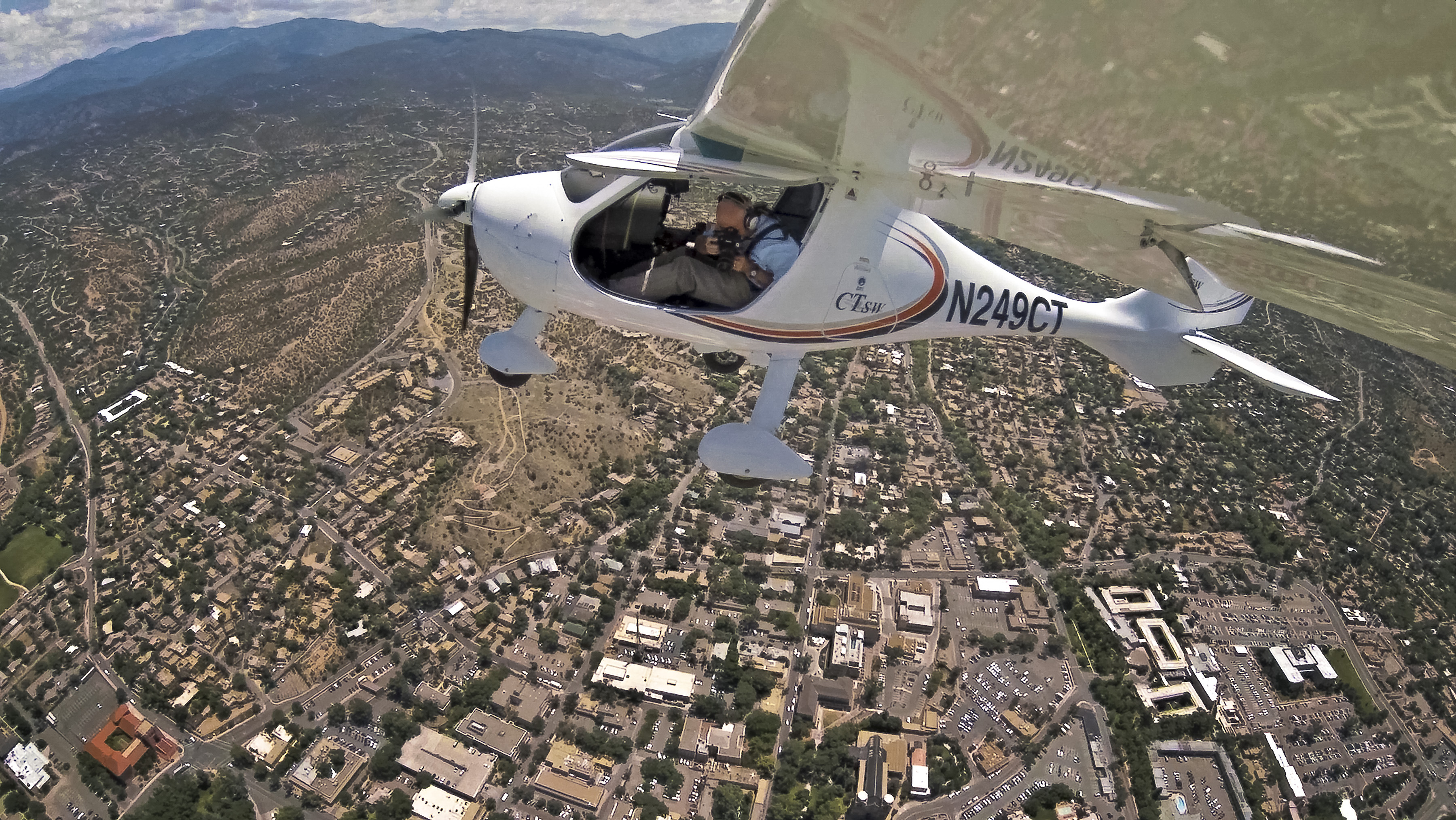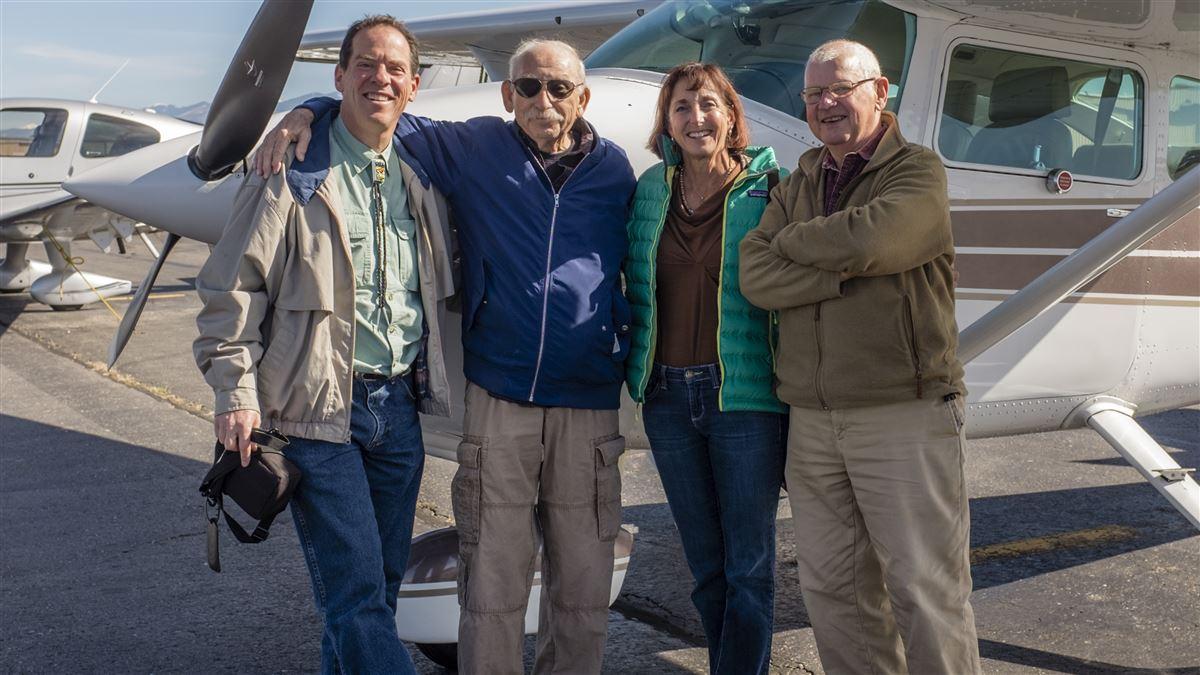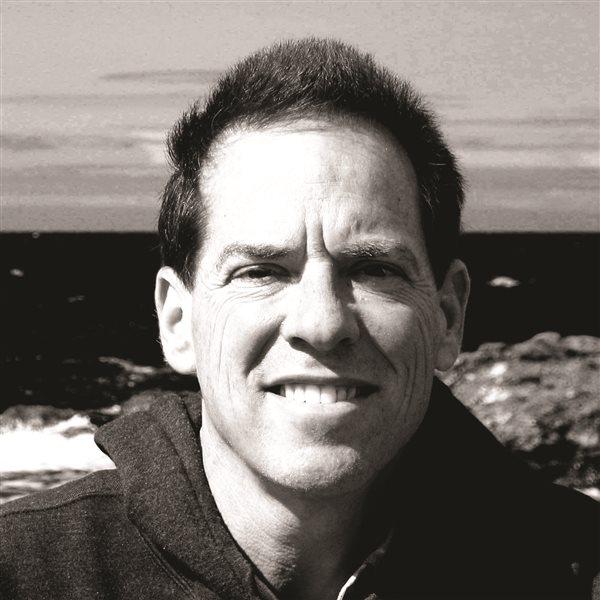Flying Carpet: Oblique views
Bittersweet aerial journey

 We’re not the first pilots to appreciate these views. In 1929, Charles and Ann Morrow Lindbergh photographed the area’s scenic and cultural sites from their custom Curtiss Falcon biplane, and hence today’s mission.
We’re not the first pilots to appreciate these views. In 1929, Charles and Ann Morrow Lindbergh photographed the area’s scenic and cultural sites from their custom Curtiss Falcon biplane, and hence today’s mission.
Our friend, aerial photographer Adriel Heisey, was commissioned 10 years ago by the nonprofit Archaeology Southwest to re-envision the Lindbergh photographs for a comparative “then and now” exhibition, called Oblique Views. We’re bound today for the opening at Santa Fe’s Museum of Indian Arts and Culture.
Joining us in Santa Fe for the event will be another longtime friend, Bruce Papier. In a past life we shared many adventures, including piloting a Cessna 210 from Indiana to Arizona. Although Bruce hasn’t kept current, he still enjoys co-piloting a buddy’s Cherokee 180. Today I counter our long-running joke that I always wave when flying over, but never stop to visit. However, a small shadow threatens our cloudless day. When I texted Bruce yesterday about inviting another couple along, he’d replied, “I’d rather you not; I have something private to discuss.” That rang ominous from our normally outgoing friend, so Jean and I have tried unsuccessfully all morning to ignore it.
Soon the snow-capped Sangre de Cristos Mountains fill our windshield, and we descend over the Rio Grande into ancient-adobe Santa Fe. Waiting at the tiedowns are Bruce and his buddy Uli. A we walk to the terminal, Bruce reveals his news.
“Remember that surgery I had last June?” he says. “Well, the outlook isn’t good.” Jean and I are speechless—after all, the three of us go back nearly 40 years. Bruce, however, has already planned for the worst and intends to enjoy his days as they come. He deflects our concerns with his usual sunny demeanor, and over lox and bagels at a nearby café we discuss our many common interests: airplanes, design, music, collectible cars, and our beloved Southwest.
“I do have one item left on my bucket list,” Bruce reveals as we head for the car. “To overfly Charles Lindbergh’s grave in Hawaii.”
At the museum, we find Heisey’s presentation booked full. Fortunately we’re able to grab a few remaining tickets for a second talk, and start comparing Lindbergh and Heisey exhibit photographs. Happily, important cultural sites at Chaco Canyon and Canyon de Chelly appear little changed since the Lindberghs photographed them. We instead identify gnarled trees surviving eight and a half decades since first photographed, and trace Santa Fe’s growth from hamlet to city.
While the 1929 Lindbergh photographs were archaeologically groundbreaking, Heisey’s fulfill instead through color and artistry. His task wasn’t easy. Not only was it difficult finding some of the Lindbergh photo sites, but Heisey had to ascertain and duplicate the altitudes, angles, and times of day from which the originals were shot. For cockpit verification, he tethered his camera to a laptop computer to compare newly taken photos with historical originals.
An hour into the show, Bruce, Jean, and I squeeze into Heisey’s packed second talk, where he captivates us with the Lindberghs’ history, accomplishments, and motivations as applied to the show’s cultural subjects. The audience’s rapt attention suggests that public interest in aviation is far from dead.
Unfortunately, we can’t chat with Heisey and his wife, Holly, because a third talk has been added to accommodate more visitors, followed by a private reception. We make do with congratulating our friend in the autograph line. No matter, we’ll catch up when Heisey’s day job flying Navajo Nation Beechcraft King Airs next brings him to Flagstaff.
Back at Santa Fe Municipal Airport, Bruce is too tired to escort us to the airplane and watch us take off, as he always has in the past. “Over all these years I’ve never flown in the Flying Carpet,” he reminds me. “We need to do something about that!” Hopefully time remains for that mission.
Jean and I have much to ponder on our sunset flight home over one of the most spectacular aerial routes on the planet. We’ll log 5.5 hours on today’s bittersweet journey, but it passes quickly. Oh, the friends we’ve made through aviation! One joy of today’s mission won’t emerge for another month, when Bruce will post photos of Lindbergh’s grave taken from a motorglider over Maui. And happily, he has more adventures planned.
See Oblique Views at Santa Fe’s Museum of Indian Arts and Culture through May 2017.
Greg Brown is an aviation author, photographer, and former National Flight Instructor of the Year (www.gregbrownflyingcarpet.com).



